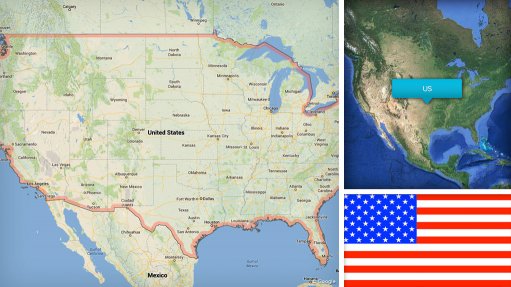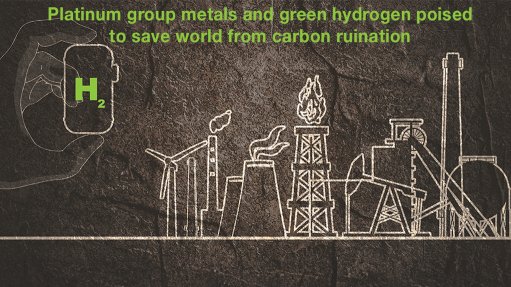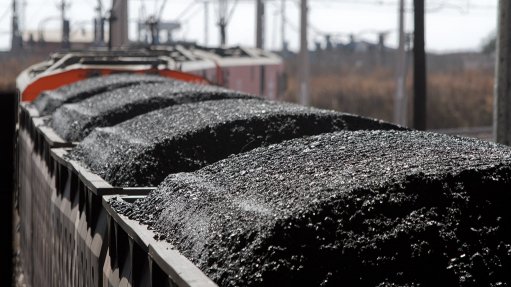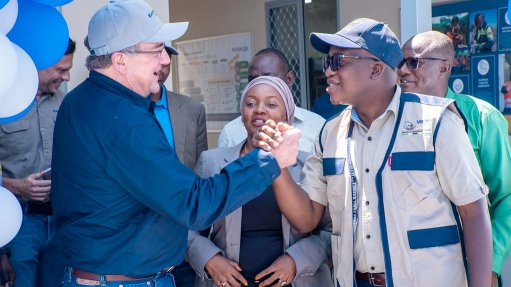Infrastructure capacity needed to maintain iron-ore advantage

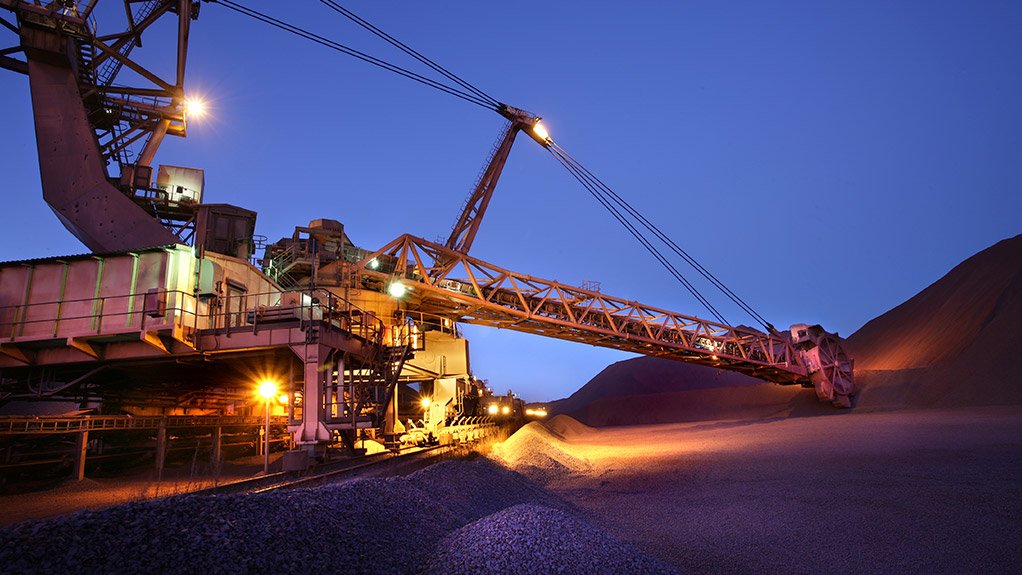
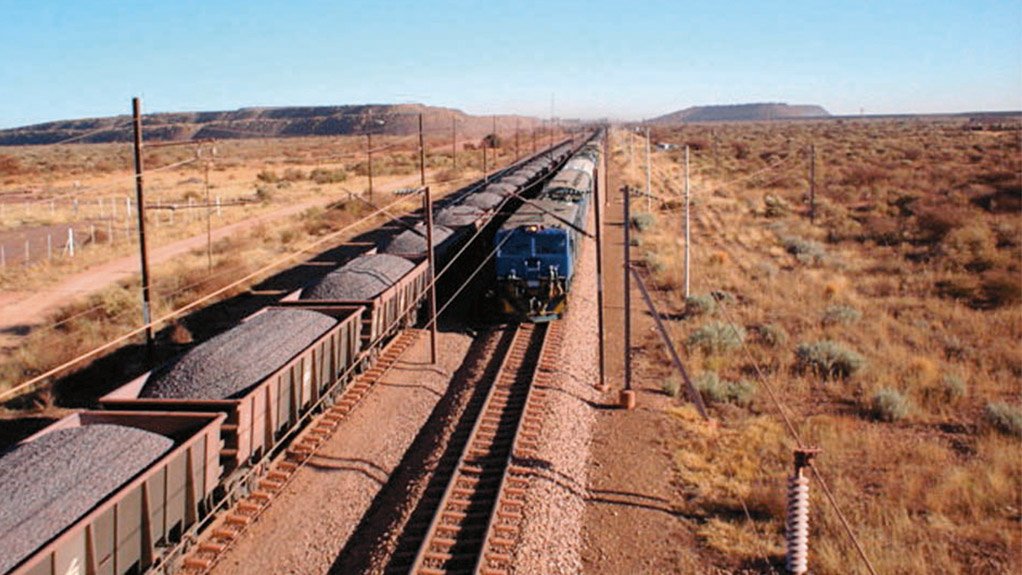
POSITIVE OUTLOOK EY South Africa believes the outlook for the South African iron-ore industry is positive, despite commodity-price decreases
Photo by Sishen
CREATING CAPACITY South Africa needs to ramp up infrastructure capacity for existing and future iron-ore production
Photo by Sishen
While the drop in the iron-ore price to below $100/t in the last month has influenced global iron-ore mining majors to consider mothballing some of their mines, South Africa’s iron-ore mining industry has not been affected by the significantly negative affects, says professional services firm EY South Africa.
Therefore, EY South Africa mining and metals leader for Africa Wickus Botha believes the outlook for the local iron-ore industry remains positive.
“South Africa has a significantly concentrated iron-ore market, with only two major iron-ore players – Assmang and Kumba Iron Ore – as well as smaller, peripheral operations. The iron-ore mining industry comprises fantastic assets and these operations are relatively insulated from the commodity’s price fluctuations,” he says.
This is because South African iron-ore is sold in rands and its revenue is determined by rand value, which means that the drop in the dollar price does not affect the local industry as significantly as it does international players, notes Botha.
“Assmang and Kumba Iron Ore are, therefore, more protected than their international counterparts, and their world-class deposits allow for better profit margins and operating costs.”
While EY notes a current slowdown in demand growth from China, Botha maintains that the need for substantial urbanisation in China, India, South Asia, Africa and South America will drive future demand for iron-ore.
“We believe the fundamentals for iron-ore remain strong. While mining operations may be decreasing in the short term as supply and demand balance out, the demand for iron-ore will continue to increase year-on-year for the next two decades.”
Increasing Production
Botha maintains that there is a significant business case and opportunity to increase South Africa’s iron-ore production, owing to the substantial market for the commodity. “While there are significant amounts of iron-ore being shipped from South America and Australia yearly, South Africa also has an extensive market for its iron-ore.”
Kumba Iron Ore reported a 5% decrease in total export sales volumes in April, compared with the first-quarter volumes of 2013, as well as a 1% drop to 9.4-million tonnes, compared with the figures of the previous quarter.
Despite this drop in exports, the company registered a 10% increase in production – to 11.3-million tonnes – from its Sishen and Kolomela mines, in the Northern Cape, for the first quarter.
Botha believes the South African iron-ore mining industry has a lot to offer, owing to well-established infrastructure and an iron-ore logistics corridor, as well as robust corporate, financial and services sectors.
“Therefore, conducting business in South Africa is significantly easier than conducting business in certain remoter areas of Africa.”
South Africa is the seventh-largest producer of iron-ore and has also traditionally been the fourth-largest exporter worldwide.
Botha further points out that, although West Africa offers significant untapped deposits, and mining companies investing in iron-ore projects are still benefiting from “first mover” advantage, it is still costly to operate in the rest of the continent’s remote areas, as infrastructure, labour and services are not readily available.
“Mining companies need a significant deposit to compensate for the investment and operational costs,” he stresses.
Infrastructure Capacity
Despite South Africa being a much more developed country than its West African counterparts – a significant advantage for the iron-ore industry – certain infrastructure- capacity challenges remain.
“For South Africa to benefit from a positive outlook and to increase viable production rates, its rail and port infrastructure capacity needs to increase,” Botha stresses.
If South Africa’s infrastructure capacity is ramped up, the business case for the construction of additional mines becomes increasingly positive for several provinces, including the Northern Cape, Limpopo’s Bushveld Complex, Mpumalanga and the North West.
The Bushveld Complex potentially has more than 20-billion tons of resources in the form of titanium magnetite deposits in its upper zone, with 20 magnetite layers that have reportedly been identified in the northern limb of the complex, ranging in thickness from 20 cm to tens of metres.
Nevertheless, Botha highlights that the only export route for iron-ore is currently by rail to Saldanha Bay, in the Northern Cape, with its port the only dedicated iron-ore export facility in South Africa. Saldanha Bay’s rail link to the Sishen and Kolomela iron-ore mines, in the Northern Cape, makes it the gateway for exporting seaborne iron-ore to international customers.
There is also no other existing South African logistics corridor to transport iron-ore to the ports of Richards Bay and Maputo.
“This is a significant challenge for the iron-ore mining industry, but if the infrastructure can be created in the Bushveld Complex, EY certainly believes that mining investment will follow the establishment of additional infrastructure.”
Botha cites the lack of infrastructure as a key challenge to junior miners planning to establish pig iron and iron-ore projects in the Bushveld Complex, such as pig iron developer Ironveld Resources and iron developer Ferrex.
He adds that, owing to this lack of infrastructure, there is also a need for social development, the establishment of near-mine communities, as well as water and power infrastructure – which junior miners may not be able to fund.
“Currently, the junior projects are not feasible because their projects need integrated solutions, rather than just plans for mine development,” Botha asserts, reiterating the need for significant infrastructure, which will foster the development of a competitive junior iron-ore market.
Nevertheless, Botha adds that, for infrastructure investment to be successful, it will require collaboration between government and the private sector. “There is a positive business case for public–private partnerships, as the private sector does not own the largest share of the existing infrastructure.
“Construction plans from private companies would have to match public-sector infrastructure plans, which require that the public and private sectors work together,” he notes.
Botha warns that, while there is a significant case for additional mine development in South Africa, extended infrastructure lead times in the country may create greater interest in West African iron-ore projects.
Comments
Press Office
Announcements
What's On
Subscribe to improve your user experience...
Option 1 (equivalent of R125 a month):
Receive a weekly copy of Creamer Media's Engineering News & Mining Weekly magazine
(print copy for those in South Africa and e-magazine for those outside of South Africa)
Receive daily email newsletters
Access to full search results
Access archive of magazine back copies
Access to Projects in Progress
Access to ONE Research Report of your choice in PDF format
Option 2 (equivalent of R375 a month):
All benefits from Option 1
PLUS
Access to Creamer Media's Research Channel Africa for ALL Research Reports, in PDF format, on various industrial and mining sectors
including Electricity; Water; Energy Transition; Hydrogen; Roads, Rail and Ports; Coal; Gold; Platinum; Battery Metals; etc.
Already a subscriber?
Forgotten your password?
Receive weekly copy of Creamer Media's Engineering News & Mining Weekly magazine (print copy for those in South Africa and e-magazine for those outside of South Africa)
➕
Recieve daily email newsletters
➕
Access to full search results
➕
Access archive of magazine back copies
➕
Access to Projects in Progress
➕
Access to ONE Research Report of your choice in PDF format
RESEARCH CHANNEL AFRICA
R4500 (equivalent of R375 a month)
SUBSCRIBEAll benefits from Option 1
➕
Access to Creamer Media's Research Channel Africa for ALL Research Reports on various industrial and mining sectors, in PDF format, including on:
Electricity
➕
Water
➕
Energy Transition
➕
Hydrogen
➕
Roads, Rail and Ports
➕
Coal
➕
Gold
➕
Platinum
➕
Battery Metals
➕
etc.
Receive all benefits from Option 1 or Option 2 delivered to numerous people at your company
➕
Multiple User names and Passwords for simultaneous log-ins
➕
Intranet integration access to all in your organisation









